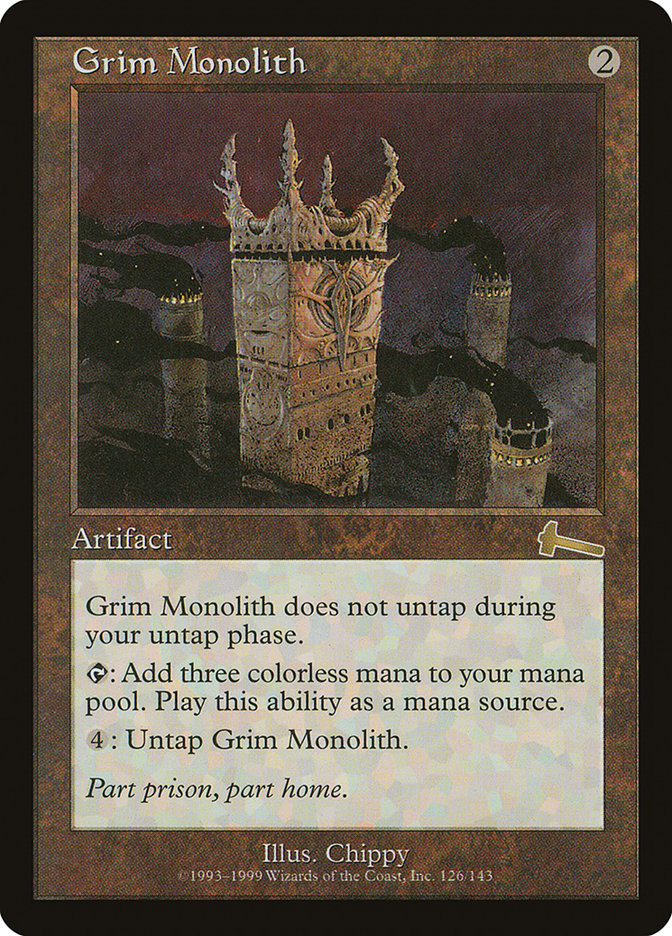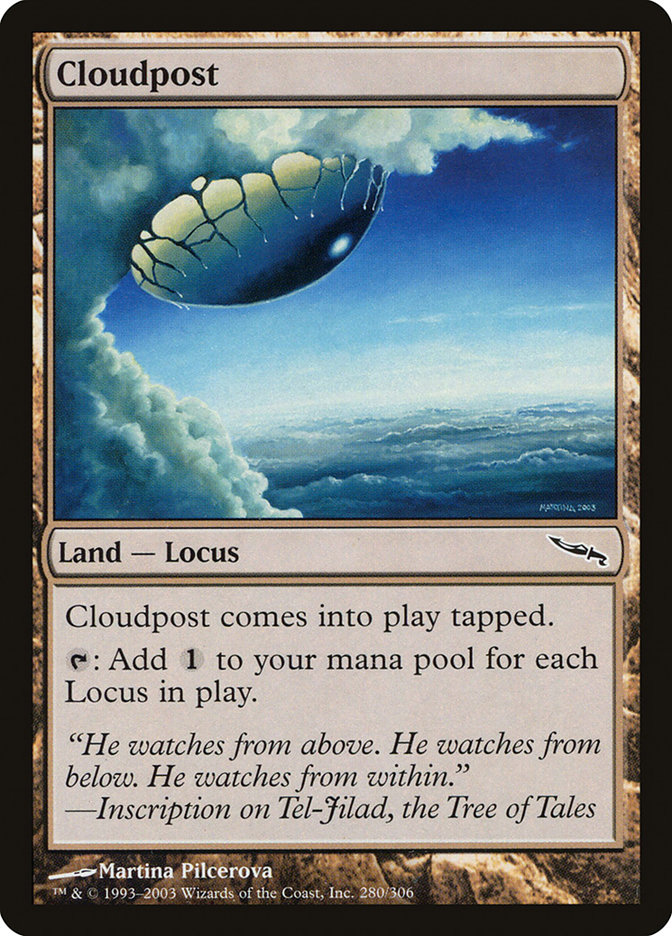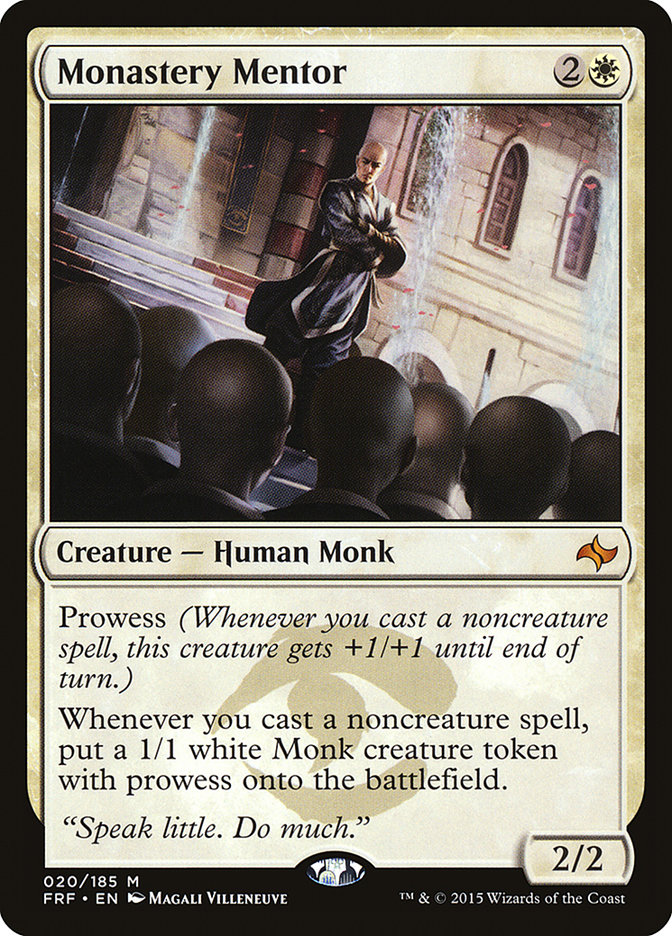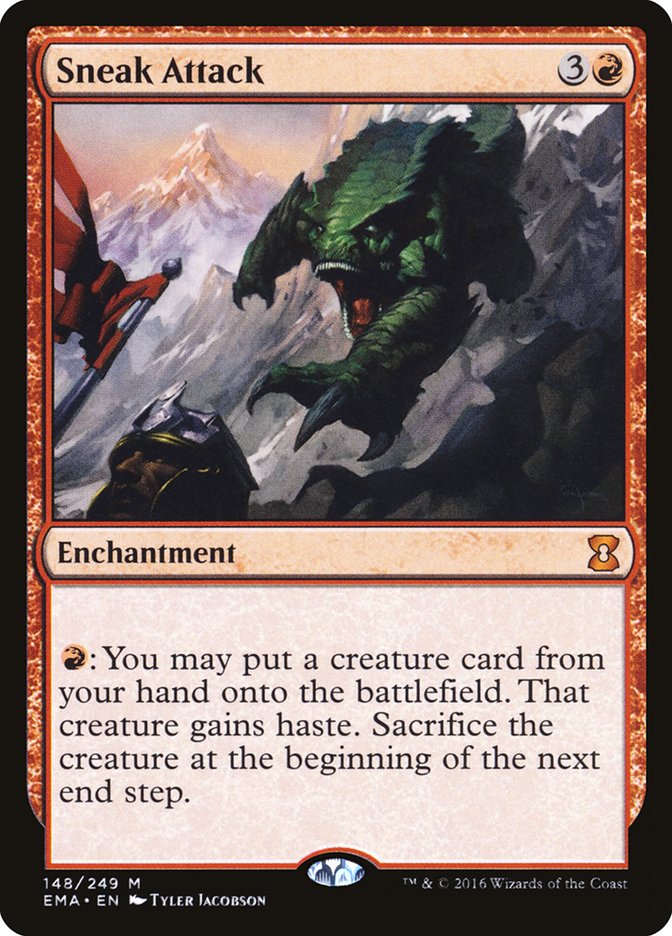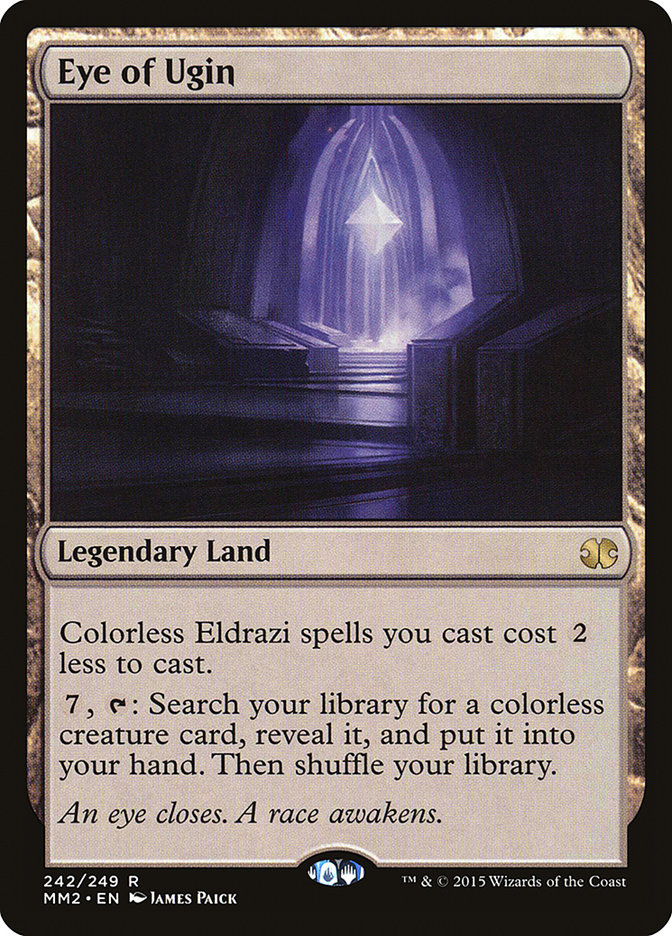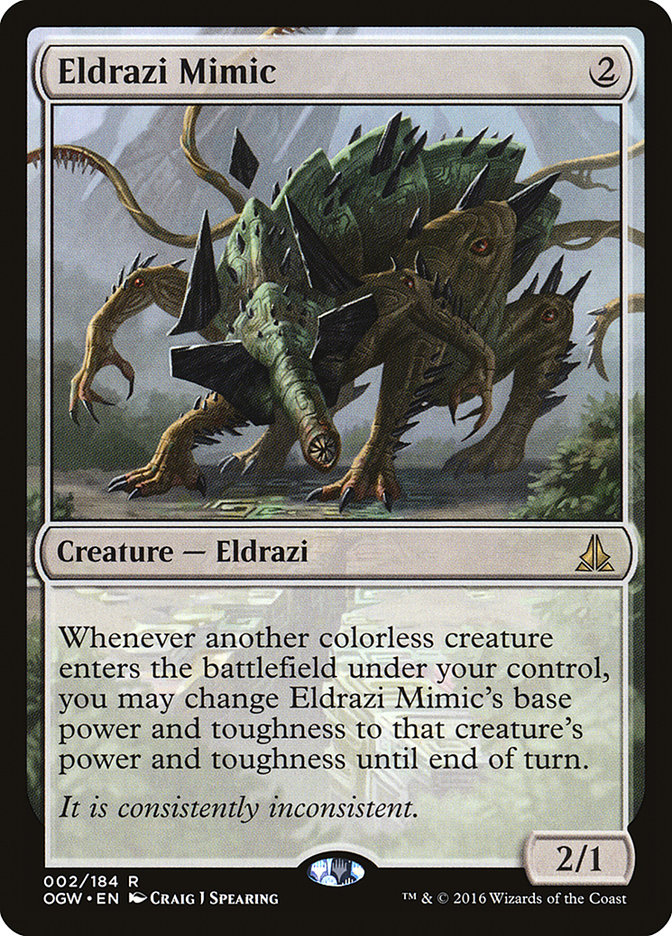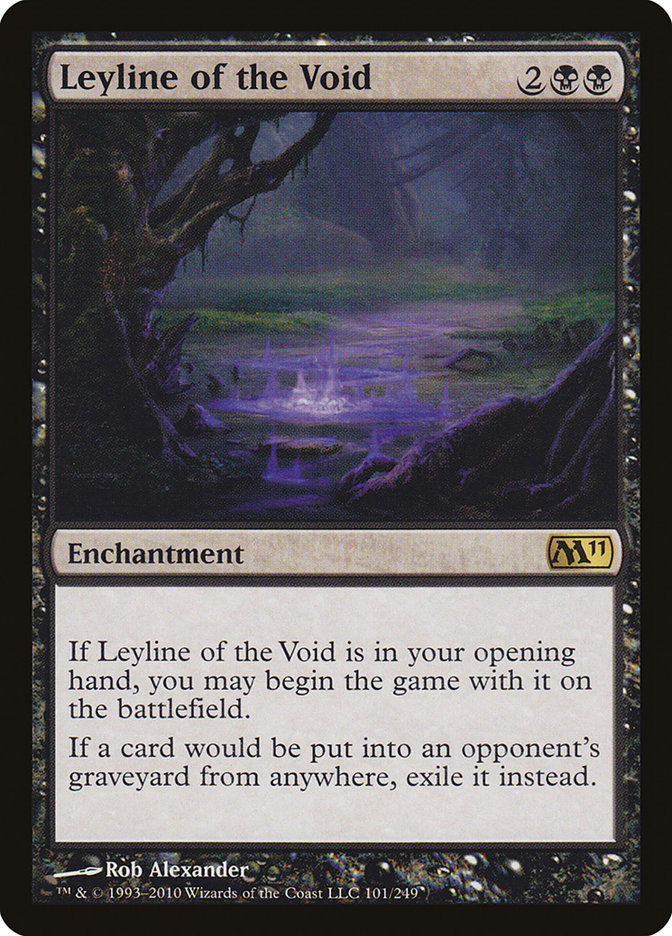Sometimes you regret a deck choice after day 1. Sometimes after the
tournament. And sometimes you realize two or three rounds in that you made
a terrible mistake. The protagonists in this showing of “If only we played
Bant Nexus” were myself and my colleagues and teammates Luca Casadei and
Jan Merkel.
When Wizards of the Coast announced a Team Constructed Pro Tour, I asked
Dirk Baberowski and Marco Blume if they were up for a comeback. A
combination of being too busy at work, family, and the tournament being in
Minneapolis meant they weren’t interested. Then Jan won a qualifier for the
2018 MOCS, which comes with a PT invite. He couldn’t go to Pro Tour Dominaria and his invite was pushed to Pro Tour 25th Anniversary.
I asked Jelger Wiegersma and Brock Parker if they wanted to be our third,
but they liked winning too much. I’ve been playing a bunch of Team Limited
GPs with Luca and Antonino de Rosa in the past years and when he became
available, that was an easy decision.
Splitting the formats wasn’t too difficult. Luca played a lot of Standard
on Magic Online while Jan has several hundred games to his name with Mardu
Pyromancer in Modern. That’s hardly the best deck in the format, but it’s
one of the better ones and knowing your deck and matchups inside out
matters more than finding a deck that is potentially a little bit better
overall.
That meant I was left with Legacy. The good news was that I know most of
the playable decks from back in the day, but I had no idea where to start.
As The Pantheon/Ultimate Guard core-group wanted to do their own thing, we
joined the other leftovers of The Pantheon along with their teammates –
Gabriel Nassif, Eric Froehlich, and David Williams; Ben Rubin, Corey
Burkhart, and Rich Hoaen; Jamie Parke, Brian Kibler, Ben Seck (TBS), and
Logan Nettles. We were still very low on people with actual knowledge of
the Legacy format and Eric suggested to add Tannon Grace and Brennan
DeCandio to fix that problem.
Rich had been playing Legacy for a while and was pretty happy with Miracles
even before Deathrite Shaman and Gitaxian Probe were banned. He suggested
Turbo Depths as a starting point for me, as that deck kept giving him
trouble, but I played three leagues with it and wasn’t overly impressed. My
next stop were decks with Chalice of the Void and Thorn of Amethyst because
in Vintage, some form of Aggro Shops is always one of the best decks. Eric
had played Affinity at the last Team Constructed GP and wasn’t very happy
with that choice, but TBS and I did pretty well in a bunch of queues with
aggressive Eldrazi builds, though the mirror match was pretty frustrating.
Around that time, the Cloudpost/Grim Monolith version of the deck started
to gain popularity on MTGO. While the matchup isn’t horrible, the big
Eldrazi deck seemed to be somewhat favored against the smaller version, so
I tried the big version myself and hated it.
For a while, we were pretty close to playing a Mono-Black Smallpox deck
that showed up among the 5-0s in the Legacy leagues on July 21st. The deck
looked great against all the fair decks trying to win with creatures and
still had a chance to beat unfair stuff in three games. But after some
early good results, we started to lose a bunch. The problem was that the
deck didn’t close games fast enough and gave the opponent too many turns to
draw something to come back into the game, and it lost too many games to
its own manabase. I’m usually not a big fan of too many copies of Urborg,
Tomb of Yawgmoth, but this deck wants to run Wastelands, Mishra’s Factory,
and a bunch of special lands like Maze of Ith and The Tabernacle at
Pendrell Vale. Not drawing Urborg often meant casting your double black
spells was a serious problem.
I don’t think you want four Mishra’s Factory because black mana is such a
problem, and playing the original version with a few more colorless lands
gave me the highlight of my playtesting.
I was facing Storm and my opponent started to go off, so I had duly pressed
F6. Then they cast Infernal Tutor and responded by activating Lion’s Eye
Diamond to ensure their tutor was hellbent. I had a Mikokoro, Center of the
Sea on the battlefield, but my attempt to right click and remove auto
yields was too slow (I’m old). Fortunately, my opponent needed a higher
storm count and used a series of tutors to get another one.
Mikokoro was ready this time.
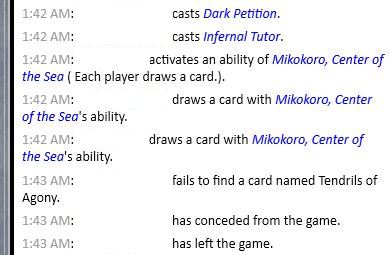
By now, we had a better idea of what to expect. Legacy is similar to Modern
in that it’s quite unlikely that any single deck will end up being played
by more than 15% of the field. We estimated that the more popular decks
would be Eldrazi, Sneak and Show, Death and Taxes, Grixis Control, and
Temur/Grixis Delver. I’m not quite sure why people like the card Delver of
Secrets itself that much, as it didn’t seem very appealing to me and our
win ratio against both of those Delver decks was very good no matter what
we were playing. Death’s Shadow, on the other hand, is a one-mana creature
I can get behind. I saw Marc Tobiasch stream with Sultai Death’s Shadow and
asked a group of German players that usually play the card in any format
it’s legal for advice.
We discussed a few choices and I ran something similar to this list on
MTGO:
Creatures (13)
Lands (17)
Spells (30)

I did pretty well and after chatting with Eric for a bit, he suggested
Sylvan Library to fix the deck’s weakness to Swords to Plowshares. Usually
I’m not a big fan of Sylvan Library, but in this deck and against that
card, it’s perfect. Not only does Swords destroy your best creatures for
one mana, it also negates a lot of effort you put into reducing your life
total to turn Death’s Shadow into a threat. You only have so many
shocklands and Street Wraiths, and gaining five to eight life in a game is
a serious annoyance. With Sylvan Library, you not only get to draw cards
for your exiled creatures, but you can also control your life total. I was
happy enough with the deck that I gathered the physical cards for it.
However, that was just before the Legacy Challenge the weekend before the
Pro Tour. And, unfortunately, that blew my plans to pieces. Grixis Control
did very well in that tournament and suddenly I saw myself playing Death’s
Shadow and Gurmag Angler in a field crowded with Fatal Pushes, Diabolic
Edicts, and Snapcaster Mages. That didn’t seem like a good idea and it was
aound this time Eric was toying around with Storm and I tried a Monastery
Mentor deck:
Creatures (5)
Lands (15)
Spells (40)
- 4 Force of Will
- 4 Thoughtcast
- 4 Lotus Petal
- 4 Urza's Bauble
- 4 Repeal
- 4 Mishra's Bauble
- 4 Ponder
- 4 Preordain
- 4 Mox Opal
- 4 Paradoxical Outcome
Sideboard

I gave up after a few leagues although there is potential here. Monastery
Mentor is a stupidly good card in the format as several of the top tier
decks have serious trouble dealing with a bunch of Monk tokens, and this
deck generates a lot of prowess triggers essentially for free. I tried 1-2
copies of Inspiring Statuary as well to be able to play as a true combo
deck, but that didn’t seem great, as Paradoxical Outcome is the only card
you really power up with that.
A big problem was that mostly every defensive deck has Surgical Extraction
these days, so getting your first Mentor countered or Thoughtseized and
then Extracted lost me a bunch of games. I tried 1-2 Sai, Master
Thopterist, a card that’s fine against control but not powerful enough
against the creature decks. Either way, I wouldn’t suggest playing this in
a serious tournament, but I was winning more than 50% with it and it’s
quite fun.
Back to the real world though: We hadn’t put much time into Sneak and Show,
even though we were fairly certain it would show up at the Pro Tour in
reasonable numbers, so I took another look. The first thing I knew was that
I didn’t like Sneak Attack. It’s too expensive and forces you to play
additional fast mana sources like Lotus Petals. Those are great when you
goldfish, but real opponents do annoying stuff like casting Thoughtseize
and Force of Will, and I hated being stuck with a bunch of dead cards.
We most likely missed a bunch of matches/leagues and the spreadsheet isn’t
perfect, but if you want to follow along and see our testing results in a
somewhat chronological order,
here you go
. The third sheet has our opponents on the right. Death and Taxes and both
Delver versions performed admirably bad against whatever we were trying.
That might be a result of us playing a lot of matches with the Smallpox
deck, which had a pretty good record against anything with creatures.
The sample size is, of course, way too small, but I was still quite
surprised how many people chose to play these decks. It’s quite sad that
WotC didn’t track results by format and we don’t know who really did well.
For example, I read that Ben Stark had a pretty bad day 2 with Ironworks in
Modern and that Josh Utter-Leyton had a great record with U/B Death’s
Shadow. I hope that gets fixed for the next Team Constructed Pro Tour.
Eric and Rich were both fairly frustrated with the format at this point.
The decks you know you’re playing against have such a wide range that it’s
pretty much impossible to make a perfect deck choice. Rich audibled to
Mono-Red Prison and Eric was looking once again at Eldrazi. LewisCBR had
posted a 5-0 with very similar aggressive Eldrazi deck almost every time
decklists were published from MTGO leagues. The problem with Eldrazi is
that there just aren’t enough cards. The core of the deck is great:
-
3-4 Eye of Ugin
-
2-3 City of Traitors
These cards are all very strong, some borderline broken, and I’m extremely
happy to play them. After that, it drops off fast though. Endless One,
Matter Reshaper, Endbringer? All these cards are “fine,” but hardly more
than that. Take, for example, an opening hand of:


Three lands, two of your best lands – but realistically you have to
mulligan this against an unknown deck. That hand can beat very few decks,
casting a 3/2 on turn 1 and a 4/4 on turn 2 just isn’t all that exciting
against most Legacy decks.
In the end, we kept the deck very close to LewisCBR’s version, though I
didn’t like playing only three copies of Wasteland. A big appeal of the
deck is to play a bunch of fast creatures and stop your opponent from
interacting with them through a Wasteland or two. Plus, Wasteland is great
against other Eldrazi decks. Having access to two Karakas between maindeck
and sideboard sounded good. Sneak and Show and Reanimator aren’t great
matchups, but it’s not easy for them to deal with Karakas. We ended up
cutting the third Mishra’s Factory for the fourth Wasteland and looking
back, I think that was a good choice. I think next in line was the fourth
Cavern of Souls, but that card is just too powerful against blue decks.
This is what Eric, TBS, and I ended up playing:
Creatures (27)
- 3 Simian Spirit Guide
- 4 Endless One
- 2 Endbringer
- 4 Eldrazi Mimic
- 4 Reality Smasher
- 4 Thought-Knot Seer
- 4 Matter Reshaper
- 2 Walking Ballista
Lands (25)
Spells (8)

I couldn’t complain about my results:
| Day 1 | Deck | My Result | Team Result |
| Lim, Tay, Lim | Death & Taxes | Win | Win |
| De Jesus Freitas, Edel, Kiefer | Eldrazi | Unfinished | Win |
| Utter-Leyton, Stark, Juza | U/B Death’s Shadow | Loss | Loss |
| Esper Berthound, Salvatto, Pozzo | B/R Reanimator | Win | Loss |
| Kurata, Urase, Liu | Grixis Control | Loss | Loss |
| Ober, Scholar, Tanforan | Temur Delver | Win | Win |
| Gregoir, Neirynck, Van per Paelt | Eldrazi | Win | Loss |
| 4-2 | 3-4 |
Not quite what we were hoping for. The problem was Luca playing Mono-Blue
Paradoxical Outcome in Standard. Nassif saw Bant Nexus at his Nationals,
and David Williams, Mark Herberholz, Ben Rubin, and Nassif built a good
version of it and were very confident against R/B Aggro and Mono-Green
Aggro. Our mistake was that we figured everyone would have the deck. Other
versions showed up on MTGO here and there, and for a Pro Tour, it’s
incredibly rare that the good teams miss a new deck, but I suppose this
being a Team Constructed tournament was the difference. A lot of teams
apparently didn’t test all that much Standard and just played the decks
they knew from the previous tournaments. Depending how R/B Aggro and
Mono-Green Aggro are set up, Mono-Blue Paradoxical Outcome has a 40-55%
matchup against those. Combine that with a bunch of mulligans and Luca was
more in the 30% area for the day. His first opponent was playing U/B
Control as well, which is a pretty rough matchup, and his day wasn’t great.
My day 1 unfortunately included some live playtesting. Eldrazi isn’t
exactly a difficult deck to play, but the most difficult part by far are
what hands to keep and what to ship back in the hope to find the elusive
turn 2 Thought-Knot Seer. How I did in that department is impossible to
know. What is very apparent is the amount of warnings I accumulated during
the day.
I started with the match against Kurata when I tried to activate an Eye of
Ugin with my Eldrazi Temple – using the Temple for two mana, of course. I
did that in the most idiotic way too. First, I tapped my two Ancient Tombs
and wrote down damage. Then I exiled a Simian Spirit Guide. Then I
announced the Eye. He caught it, fortunately, and in such a case the ruling
is to go all the way back before the illegal part started. Meaning I got to
keep both my four life and the Simian Spirit Guide. I figured that would be
worse when we called the judge.
Kurata was sitting on one life the whole time and I was going to get a
Walking Ballista, hoping that he was out of countermagic. As I didn’t have
the mana to use the Eye, I got another draw step: a Mishra’s Factory. I
found a Ballista on his end step and then drew a Reality Smasher. He easily
dealt with all three though. Never lucky.
The even bigger blunder happened in game 3 of the last round against
Gregoir in the Eldrazi Mirror. I started game 3 with a perfect hand. Eye of
Ugin into Eldrazi Mimic with an Eldrazi Temple and a Thought-Knot Seer in
hand. He played a Mishra’s Factory and passed. I played Thought-Knot Seer
and announced both triggers. He responded with Dismember, we resolved the
Thought-Knot Seer trigger, and then I said, “take 4”.
Now that wasn’t what you’d call a “good idea.” By saying that, I
essentially clicked “Yes” to the Eldrazi Mimic’s trigger. As I learned in
the next five minutes, the stupid tentacle monster copies the last known
value of the creature triggering it. Which in this case was -1/-1. Not
great.
When I was just about to bin my creature, the judge looked up and said that
something changed with those rules somewhat recently and she wanted to
double check. My opponent was already a little annoyed, figuring that there
might be a chance that I somehow got to keep the Mimic. Upon her return,
she informed us that indeed she was wrong. The Mimic doesn’t die because
it’s a -1/-1; it dies because it’s a 0/0. Creatures in the graveyard don’t
remember negative values apparently. Well then! That didn’t help my Mimic
much. What did help was me drawing Reality Smashers on both the next two
turns. But Luca somehow managed to lose his Standard match against Van der
Paelt’s God-Pharaoh’s Gift deck, a very positive matchup for us. So, we
lost the match even though I quite undeservedly won my Colorless Eldrazi
mirror.
| Day 2 | Deck | My Result | Team Result |
| Yasooka, Kakumae, Watanabe | Omnishow | Loss | Loss |
| Kazanskis, Dreimanis, Bukovskis | Grixis Control | Win | Win |
| Smith, Blum, Crotts | Temur Delver | Win | Win |
| Linde, Lakcey, McKay | Steel Overseer-Affinity | Win | Win |
| MacDonald, Rood, Pite | Sneak & Show | Win | Loss |
| Landweber, Mei, Steuer | UB Reanimator | Win | Win |
| Wilks, Schroder, Linabury | Sneak & Show | Loss | Win |
| 5-2 | 5-2 |
Playing against Shota and Yuuya at 3-4 to start the day was a little rough.
Shota dispatched me in a few minutes with turn 2 and 3 Show and Tell. He
seemed to be in a hurry as he packed his stuff up and left the table
without even telling his teammates the result.
I managed to avoid picking up any warnings during all of Saturday, and I
call that a victory. Most of my matches were honestly quite boring. I had
pretty good draws and my opponents mostly did not. Landweber in round 13
lost to a single Leyline of the Void. Turn 6 I had played a land every turn
and had three more lands in hand, but he never drew one of his solutions
for my Leyline and had a hand full of Entombs and Reanimates when I started
to activate Eye of Ugin. Quite a strange game.
The last round was done while the Modern match was on turn 10 or 12 of
their first game. After a quick Emrakul in game 1, Wilks’ opening hand in
game 2 was Mountain, Petal, Petal, Show and Tell, Emrakul, the Aeons Torn,
Force of Will, and Brainstorm. I didn’t have a Karakas or a Tumble Magnet,
although I doubt a Magnet would’ve done more than delaying the inevitable.
I conceded on my second turn.
Overall, we ended 8-6 and finished just about in the money. We were happy
with both our Modern and Legacy deck choices, but obviously quite upset
that we didn’t jump on the Bant Nexus train. If Luca went 9-5 or better, we
would’ve had quite a good tournament. Of course, you can say our pairings
would’ve been more difficult, but three of our opponents finished the swiss
in second, fourth, and sixth place.
If I could play the tournament again, I’d probably play Sultai Death’s
Shadow. I think I just overreacted to the amount of Grixis Control decks on
MTGO. Eldrazi has the same problem: you’re not exactly happy to play
against Sneak and Show. You can beat them of course, but Death’s Shadow can
also beat Grixis Control. That doesn’t mean Eldrazi is bad, as I was very
happy with my result. It’s a bit annoying that your most difficult
decisions are mulligans though. After that it’s rather simple: just play
whatever you can cast!
Would I change anything If I was playing Eldrazi again? I was honestly
pretty happy with most of the cards. The All is Dust saw very little use,
so I doubt I’d have a sideboard slot for that again. In theory it’s good
against Death and Taxes and Temur Delver, but that’s also two decks that
are attacking your mana sources, so you should be doing pretty well in
games where you get to cast that card.
Most other decklists I saw had Sorcerous Spyglasses, but I didn’t miss
those at all. Against Sneak and Show, I’m worried about Show and Tell and
not Sneak Attack. Naming planeswalkers is nice here and there, but I was
pretty happy without having access to that. Tumble Magnet was surprisingly
good, and it’s effective against both Colorless Eldrazi and Sneak and Show,
which means about 20% of your opponents, and it especially helps against
bigger Colorless Eldrazi versions, although those didn’t exist at all at
the PT. Leyline of the Void is absolutely required. Even though I somewhat
hate that that card even exists, but without it some decks would be way too
powerful.
The two copies of Karn, Scion of Urza I’m rather uncertain about. I
sideboarded them in the mirror and against Grixis Control, but never cast
any. I believe it was countered or discarded at least once, but it might
just not be good enough. Four mana without the Eldrazi tag is quite a lot,
and the tokens aren’t exactly giants. It’s somewhat important to have an
additional threat against Grixis Control, as you want to get rid of some of
your dead weight like Simian Spirit Guide and you need something for the
mirror when you must cut Chalice of the Void. Karn fills both those roles,
so he might be worth the trouble.
That was two PTs in a row for me, and I might take a break for now,
although there’s a chance I’ll show up at the next PT in Atlanta. Team
Constructed was more fun than I expected, although the testing was pretty
weird. Your best chance is to have one team for the tournament and another
team for the testing part. It just didn’t make any sense for Jan and Luca
to try to get into Legacy since they had their own format to figure out.
Not being able to discuss deck/card choices with your teammates is quite
strange.
Legacy as a format was better than I expected as well, but don’t let the
great games on Sunday of the PT fool you: there’s plenty of turn 1 Chalice
or Emrakul or dredge half my deck into my graveyard; thanks for playing.
Other Constructed formats have similar issues except that the unbeatable
draws in Legacy mean you scoop your cards up on turn 1 or turn 2, while in
Standard you have the illusion of being in the game for a few turns.
Have fun and don’t blame me for this Nexus of Fate stuff. That’s all
Nassif’s fault.



